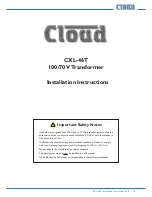
POWER SUPPLY GUIDELINES
The user must provide a clean source of
power to the transmitter to ensure proper
operation. The HP-3 incorporates a precision
low-dropout regulator on-board which allows
operation over an input voltage range of 2.8 to
13 VDC. Figure 18 shows a typical supply
filter. This filter should be placed close to the
module's supply lines. Its actual values will
depend on the type and frequency of noise
present in the user's product.
The HP-3 can be put into an ultra-low-current (<15µA) power-down mode by
holding the PDN pin low. If the PDN pin is left open or held high, the transmitter
will turn on. In power-down mode, the transmitter is completely shut down.
Page 10
POWER-UP SEQUENCE
The HP-3 transmitter is controlled
by an on-board microprocessor.
When power is applied, a start-up
sequence is executed. At the end
of the start-up sequence, the
transmitter is ready to transmit data.
Figure 19 shows the start-up
sequence. This sequence is
executed when power is applied to
the VCC pin or when the PDN pin is
cycled from low to high.
On power-up, the on-board micro-
processor reads the external
channel-selection lines (parallel
mode) or serial channel input (serial
mode) and sets the frequency
synthesizer to the appropriate
channel. Figure 3 on page 3 shows
the typical turn-on response time for
an HP-3 transmitter. When the
frequency synthesizer has locked
on to the proper channel frequency, the circuit is ready to accept data. This is
acknowledged by the CTS line transitioning high. The module will then transmit
analog or digital data from the user's circuit.
The module can be put into an ultra-low-current (<15µA) power-down mode by
holding the PDN pin low. This removes all power from the transmitter's circuitry.
If PDN is left floating or held high, the transmitter will wake up and begin normal
operation. No transmitter functions work when PDN is low.
POWER ON
Determine Mode
Read Channel-
Selection Inputs
Program Freq. Synth
To Default CH. 50
Program Frequency
Synthesizer
Crystal Oscillator
Begins to Operate
Crystal Oscillator
Begins to Work
Ready for
Serial Data Input
Program Frequency
Synthesizer
Determine State of
CTS Output Pin
Cycle Here Until More
Data Input, Mode Change
or PLL Loses Lock
Determine State of
CTS Output Pin
Cycle Here Until
Channel
or Mode Change
Serial Mode
Parallel Mode
Figure 18: Typical Supply Filter
Figure 19: Start-up Sequence
.1
µ
F
>22
µ
F
V
cc
IN
V
cc
to
module










































